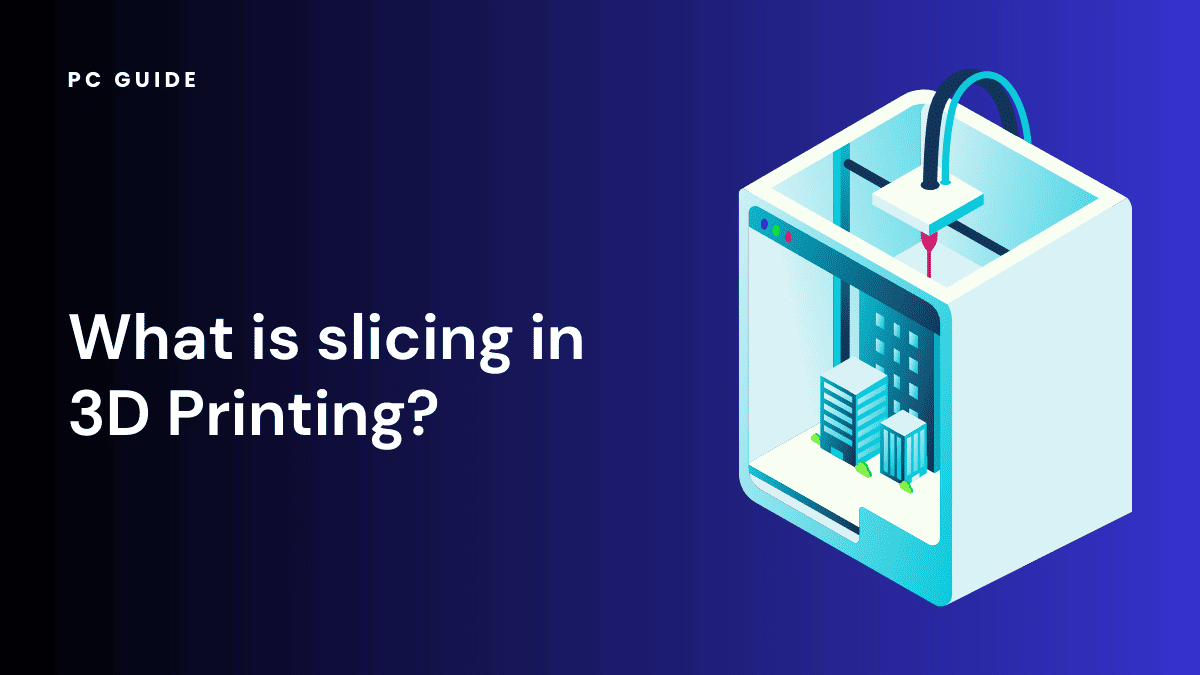What is slicing in 3D Printing?

Table of Contents
Would you need a physical print of your 3D model design? If so, you need to translate it using slicing software.
Geometry code, often called G-code for short, is the programming language of most automated machine tools like 3D printers. So, such machines usually employ various tools to translate a received set of commands or instructions into this machine code. In this regard, a slicer is an essential tool in 3D printing.
Keep reading to the end of this post to learn more about slicing in 3D print and how it works.
The Fundamental Role of Slicing in 3D Printing
In 3D printing, slicing performs its literal meaning, such that it “slices” a 3D model into countless layers to achieve commands that the 3D printer can understand. This slicing process is an intermediate step in 3D printing because most 3D printers cannot directly execute a computer-aided 3D model (CAD).
So the STL or OBJ file needs to be converted into a G-code, which the 3D printer will then use to build the physical object.
Slicing Software: The Best Slicers for 3D Printing
There are numerous slicing software options available, both free slicers and third-party softwares, each with its unique components and slicing algorithm.
Below are some popular slicing software commonly used in 3D printing:
- Ultimaker Cura: Known for its user-friendly interface and extensive library of print profiles.
- Slic3r: An open-source slicer that offers a high degree of customization.
- Blender: A powerful tool that combines 3D modeling and slicing in one package.
- KISSlicer: A straightforward slicer that focuses on providing the best print quality.
- 3D Slash: A unique slicer that uses a building-block approach to 3D modeling.
- TinkerCAD: An easy-to-use tool that’s perfect for beginners.
- Voxelizer: A versatile slicer that supports a wide range of printers and materials.
- 123D Catch: A tool that allows you to create 3D models from photos.
- REALvision: A slicer designed specifically for resin 3D printers.
- PrusaSlicer: A slicer developed by Prusa Research, known for its advanced features and compatibility with various printers.
- Creality Slicer: A slicer developed by Creality, optimized for their range of printers.
The Impact of Slicing on the Print Bed
The slicing process has a direct impact on the print bed, determining how the object will be positioned and how the printer will construct each layer. The slicer software considers factors such as layer height, infill pattern, and infill density, translating these parameters into a tessellation of the STL file formats that the printer can understand.
How Does 3D Slicing Work?
The slicing software works by digitally slicing or cutting a 3D model into thin layers, which the 3D printer can then print successively to build the complete object. The number and thickness of layers, often referred to as the layer height, determine the print resolution – thinner layers give higher resolution. A typical layer is between 0.05 mm to 0.5 mm thick.
From STL Files to G-Code Files
The process begins with STL files, the standard file format for 3D printing, which the slicer software translates into a G-code file. This file contains detailed instructions for the printer, such as the path the printer head should follow, the speed of movement, and the amount of filament or resin to extrude.
Customization and Control
While the primary design of slicing software is to convert digitally created object models into instructions for a 3D printer, most of these tools usually offer other features.
For example, many slicing tools allow you to control orientation, infill, shell-thickness, brims, rafts, skirts, and other supporting structures.
Infill Pattern and Density
Infill pattern and density are two crucial parameters that the user can control. The infill pattern, such as honeycomb or grid, affects the strength and print time of the object. The infill density, on the other hand, determines how solid the printed object will be. An FDM printer, for instance, can use less filament and print faster with a lower infill density.
Conclusion
Slicing involves cutting a 3D model into printable layers and creating the toolpath file, which the 3D printer will follow to construct each layer until the final object is complete. As a result, it is critical to the 3D printing process.
We hope this article has provided you with the fundamentals of slicing in 3D printing.